Apple announces AI operating systems at WWDC24: macOS Sequoia, iOS 18, iPadOS 18, and more
Posted on
by
Kirk McElhearn

At its WWDC24 keynote event, Apple presented a wide range of new features coming to its operating systems this fall: macOS Sequoia, iOS 18, iPadOS 18, tvOS 18, watchOS 11, and visionOS 2. These features include enhanced customization of home screens on iPhones and iPads, new features to organize and find photos, new writing tools, and more. But the star of the show is a new element that will be the cornerstone of these operating systems: Apple Intelligence.
Here are the top ten new features coming later this year.
1. Customizable home screens and mobile apps
iOS 18 and iPadOS 18 will allow users to customize their home screens in new ways. App icons will no longer have to line up at the top of the screen; you’ll be able to move icons anywhere you want, though they will still snap to a grid. (Android has offered similar functionality for years.) You will also have options to tint icons in your choice of color, and you’ll be able to choose dark icons that don’t stand out when your device is in dark mode. You will also be able to lock and hide apps, so if you hand someone your phone, they can’t access your personal data. If configured correctly, this could mitigate a lot of the challenges of handing your iPhone to someone (for example, to take your picture, make a phone call, or look at a photo or video).
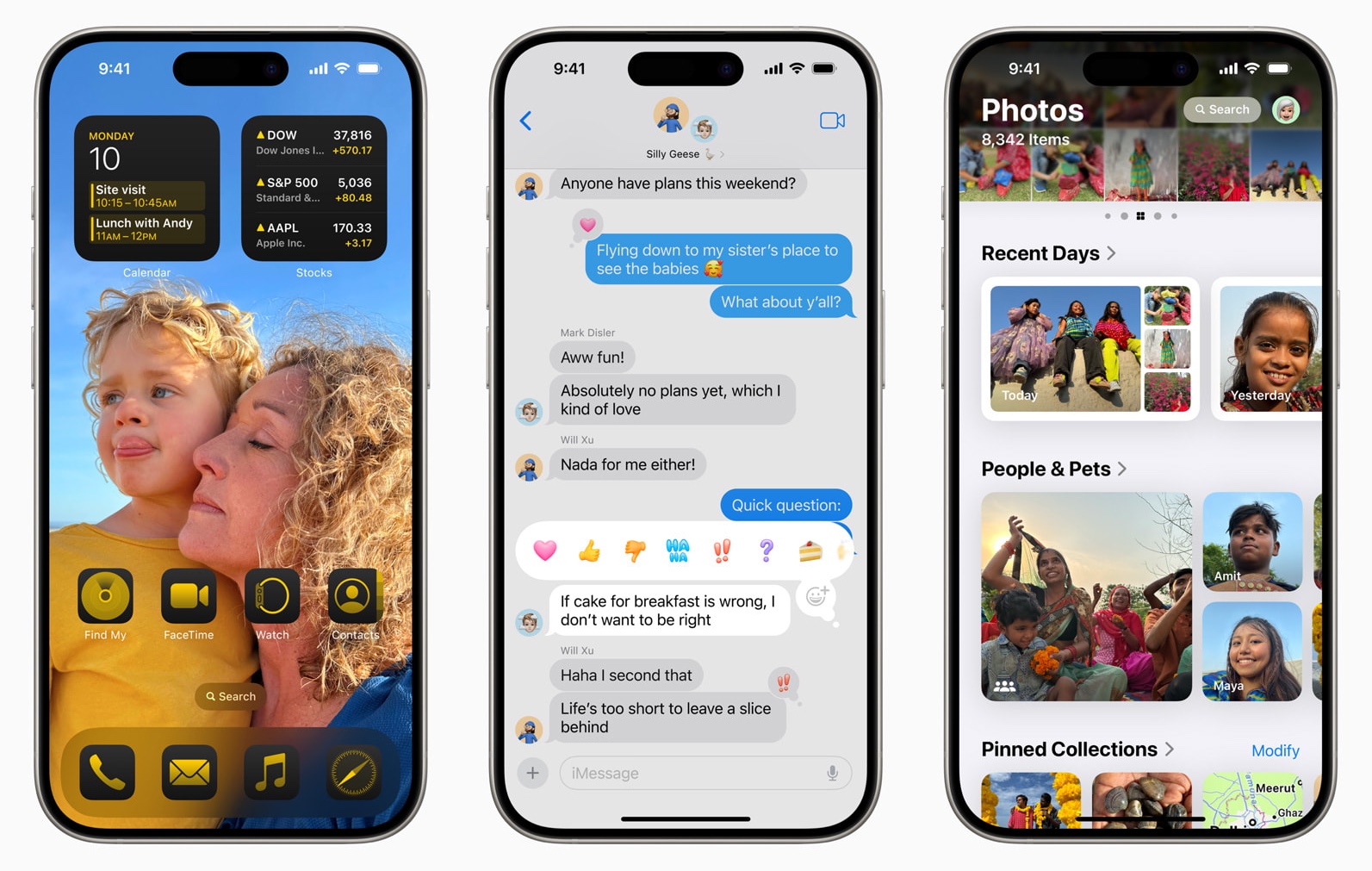
2. Control Center
Apple’s Control Center, which you access by swiping down from the top right corner of an iPhone or iPad, will become more customizable. Control center will offer more tools, and will be split into multiple pages. You’ll be able to have the main Control Center icons on the first page, icons to control your smart home devices on the second page, and tools to control media on another page. Third-party apps will also be able to integrate with Control Center.
3. Photos
With a new display, automatic categorization powered by machine learning, and collections—groups of photos by person, event, trip, and more—the Photos app is getting its biggest update in years. You’ll be able to search for photos using natural language; just describing what’s in the photo you’re looking for. And a new Clean Up tool will use AI to erase and fill distractions, such as people or objects in the background of photos.
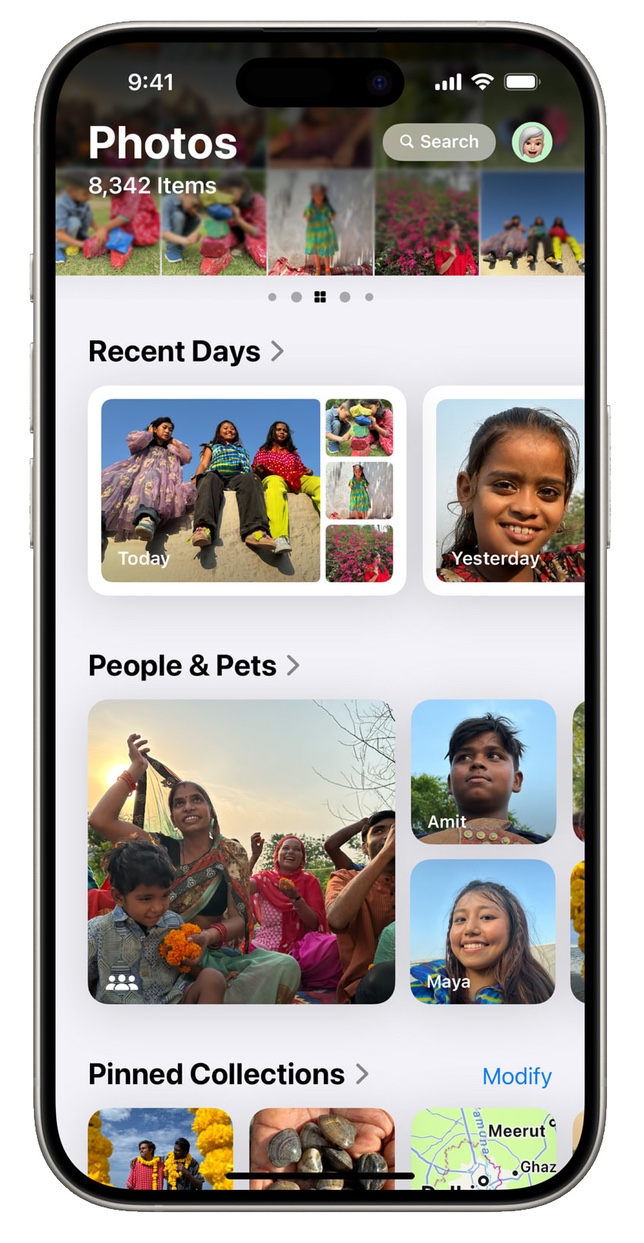
4. Image Playground
The new Image Playground framework and app will let users create images using generative AI tools, right on their devices. While the styles available are limited to Animation, Illustration, or Sketch—all images that don’t look realistic—users will be able to create images using a few keywords or phrases. This will also use contextual information, such as photos of people in your Photos library, to create images.
5. Writing tools
If you have a bit of experience with current generative AI tools, you’ve seen many of them offer writing features. They can summarize or rewrite texts, proofread, create lists or tables, and make an outline of key points in a text or document. These tools will be available to any app that uses the standard text editing features in iOS, iPadOS, or macOS, and will also include the ability to generate text from prompts.
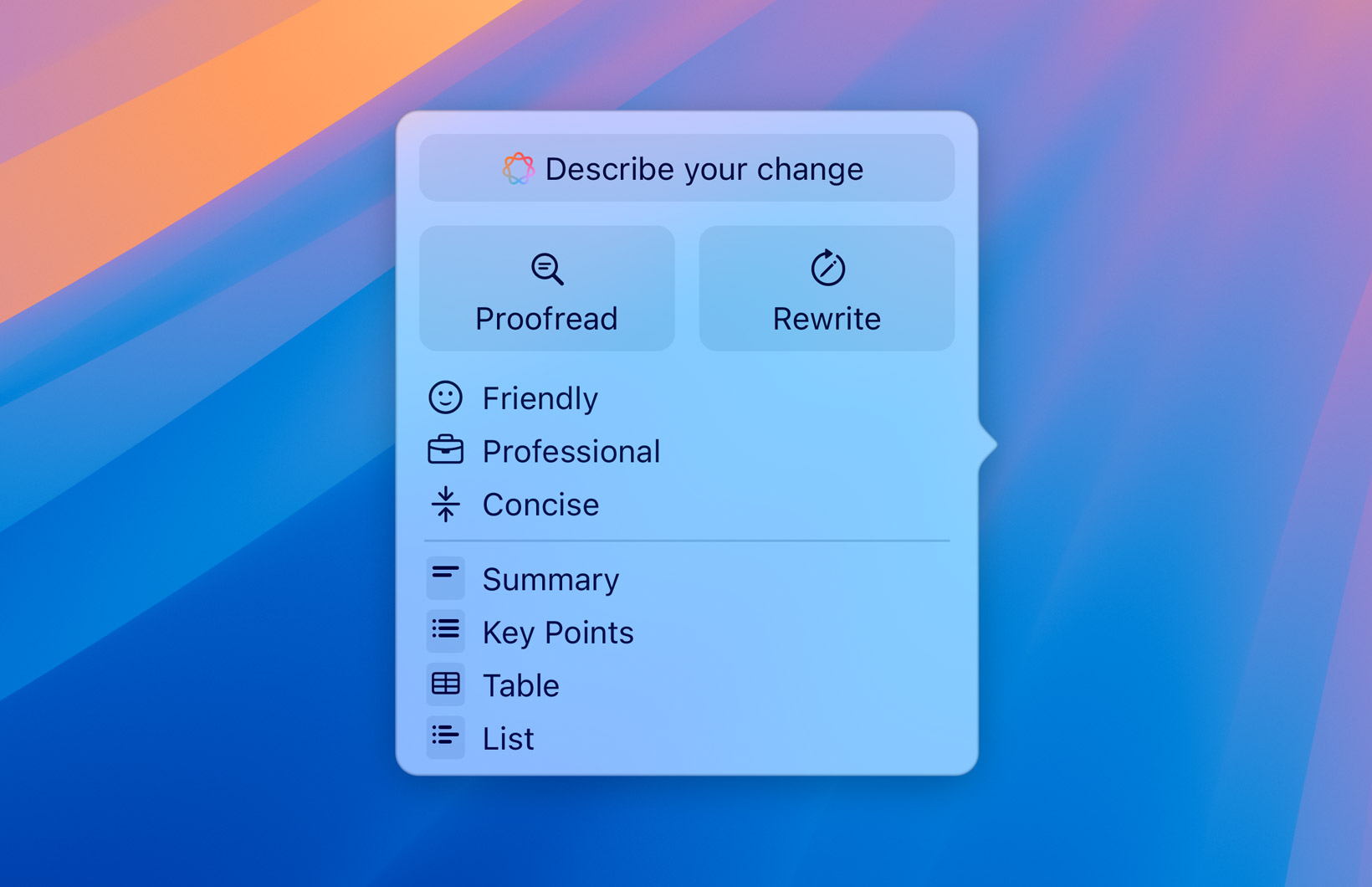
6. Mail
Big changes to the Mail app will automatically categorize emails into four categories: Primary, for essential emails, Transactions for order confirmations and receipts, Promotions for marketing emails, and Updates for newsletters and other emails. This, together with improved grouping of emails by sender, will make it easier to navigate busy inboxes.
7. A new Passwords app
In recent years, Apple has enhanced the use of Keychain, its encrypted password storage feature. Currently, you access passwords in the Settings of the various operating systems, but Apple is creating a standalone Passwords app. This will make it much easier to manage passwords, passkeys, and multi-factor authentication codes. This data syncs to all Apple operating systems via iCloud, and is end-to-end encrypted.
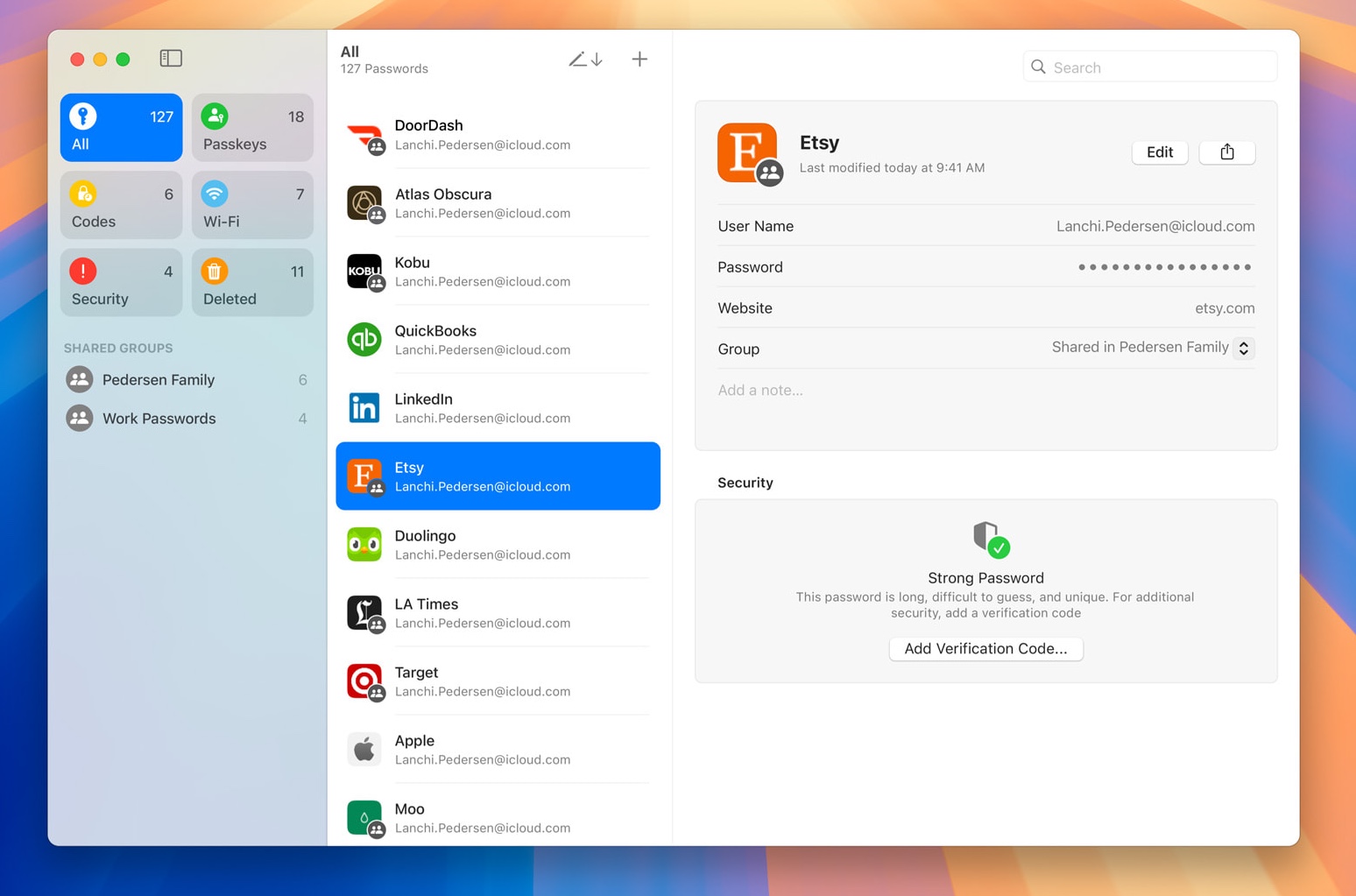
8. New health and workout features in Apple Watch
watchOS 11 adds a feature that many people have requested: the ability to pause your rings when you are sick, traveling, or when you need to take a break and don’t want to end your streaks. You’ll be able to set different targets for each day of the week, and the Fitness app on the iPhone will let you customize metrics on the Summary tab. A new Vitals app will alert you if your heart rate, respiratory rate, wrist temperature, blood oxygen, or sleep duration deviate from your normal, which could be a sign of illness.
9. Math Notes and Calculator
Yes, Apple is finally bringing a Calculator app to the iPad. It’s always been strange that there was no stock calculator app, but this one goes beyond the basics. Math Notes lets you write formulae on your iPad, using an Apple Pencil or the keyboard—or input this data on an iPhone or Mac—and the app will perform live calculations. You can make changes to the data to see new results.
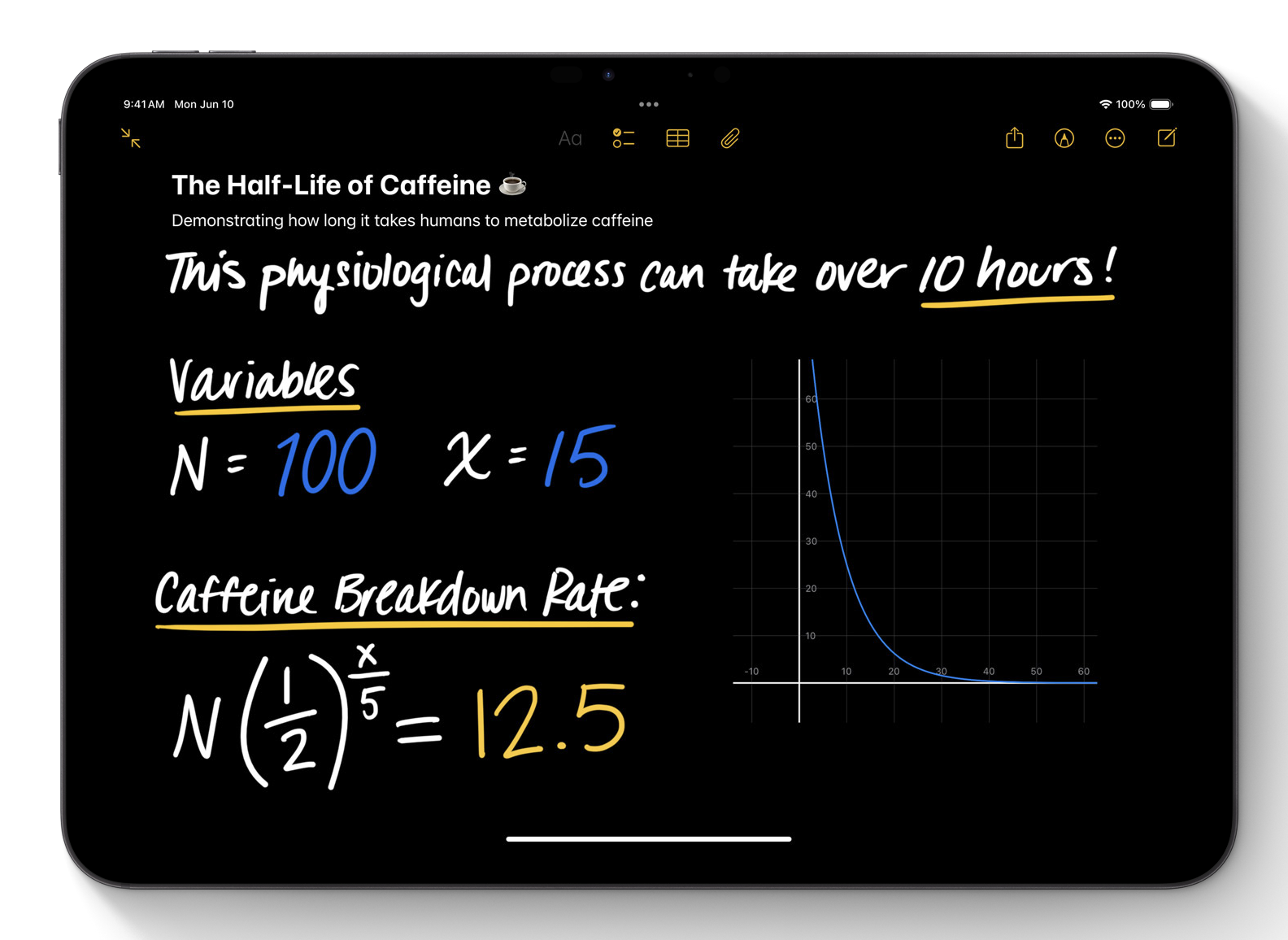
10. Apple Intelligence
“Apple Intelligence” shares its acronym with AI, which is usually short for artificial intelligence. The company is differentiating its approach to the current wave of generative AI by focusing on privacy. Apple Intelligence includes a suite of tools, such as the aforementioned writing tools, Image Playground, and photo editing tools. But beyond those tools, Apple is focusing on providing on-device, contextual AI assistance. Tightly linked with Siri, Apple Intelligence will become more personal, since it will be able to use all the data and files on your device to perform tasks.
When a device cannot perform the query requested, Apple will send the query to Private Cloud Compute, a data center run by Apple, where your data is used only for those requests and never stored.
In addition to the previously mentioned features, Apple is also partnering with ChatGPT, offering access to GPT-4o for free—no OpenAI account required. The use of ChatGPT won’t happen automatically, but when Siri determines that GPT-4o may be able to answer a query, your device will ask your permission to send your query to ChatGPT. This functionality will be available throughout Apple’s main operating systems, and will offer seamless access to OpenAI’s powerful generative AI features.
There is one major caveat to Apple Intelligence, though; it won’t work on most iPhones, and it only works on Macs and iPads with an M1 chip or later.
And more
Of course, this list only covers the highlights. There are lots of other small improvements as well. For example, in visionOS 2, you’ll be able to turn your 2D images into “spatial photos” that seem slightly 3D.
The changes that Apple presented today may be some of the most profound changes to Apple operating systems since the shift to Mac OS X more than 20 years ago. The company is laying the groundwork for a huge leap in capabilities of its devices through artificial intelligence. These new features are only just the beginning, and Apple’s operating systems going forward will expand on this first generation of deep integration of AI tools.
How can I learn more?
 Each week on the Intego Mac Podcast, Intego’s Mac security experts discuss the latest Apple news, including security and privacy stories, and offer practical advice on getting the most out of your Apple devices. Be sure to follow the podcast to make sure you don’t miss any episodes.
Each week on the Intego Mac Podcast, Intego’s Mac security experts discuss the latest Apple news, including security and privacy stories, and offer practical advice on getting the most out of your Apple devices. Be sure to follow the podcast to make sure you don’t miss any episodes.
You can also subscribe to our e-mail newsletter and keep an eye here on The Mac Security Blog for the latest Apple security and privacy news. And don’t forget to follow Intego on your favorite social media channels: ![]()
![]()
![]()
![]()
![]()
![]()
![]()